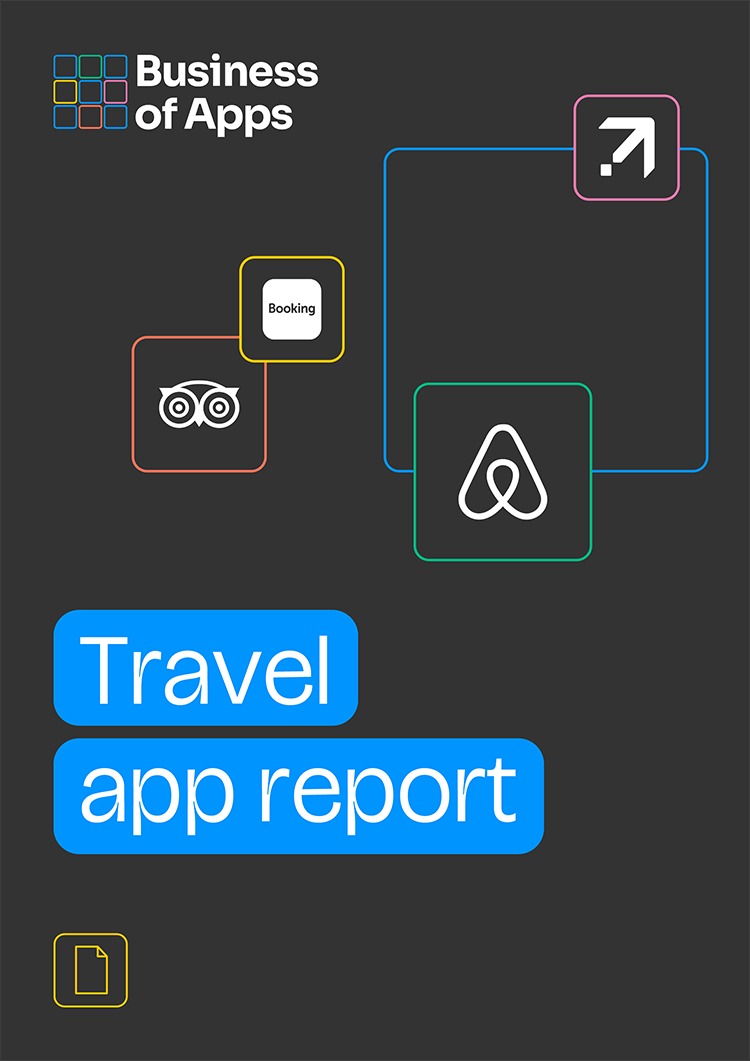Every year away from the pandemic seems to be a blessing to the travel app industry, which was struck with declines of up to 70 percent in revenue and usage in 2020. Travel apps, which were popular pre-pandemic, have exploded in popularity with many customers using them for the first time in the last four years.
For app marketers, this is a key time in the travel app industry. The boon from the end of Covid restrictions is over, but the changes in consumer behaviour between 2019 and 2021 have remained largely intact, creating a fresh ground for marketers to try new things.
Like most ecommerce sectors, the north star metric for travel apps is the purchase. With travel, this is a much larger investment than average, with customers spending hundreds or thousands of dollars on one specific item. This makes reengagement a massive focus, as many would be buyers switch between sites and take week long breaks before the final sale.
For this reason, travel apps tend to have a lot of systems in place to keep a user thinking about the holiday. A notification reminding them of the booking, an email a few days later, and retargeting promotions getting them to take advantage of limited time offers.
At the same time, active usage is not as important, as people will for the most part only use a travel app when they are planning to book somewhere. Very few people access travel apps every day.
We have collected data and statistics on travel app benchmarks. Read on below to find out more. If you want even more insights, check out our travel app report.
Key Travel App Benchmarks
- Travel apps had a 18% retention rate on day one, dropping to 2.8% on day 30
- Google Play travel apps have a much higher app store conversion rate than iOS
- Asia has the highest install rate for travel apps by region, North America has the lowest
- Travel app cart abandonment rates have increased every year since the pandemic
- Average order value has also increased for travel apps every year since 2020
Travel App Report 2024
Want to learn more about the travel app industry? In our Travel App report, we cover financials, usage, downloads, and demographics by age and gender, alongside market share, and benchmarks.
Travel App Retention Rate
Retention for travel apps is slightly lower than average on day one, but they do retain more users by day 30 than the average for all app sectors.
Travel app retention rate day one to day 30 (%)
Travel app retention rate 2020 to 2023 (%)
Travel App Conversion Rate
This is the conversion rate of app page views to installs. Google Play apps have a much higher conversion rate than apps on the Apple App Store.
Travel app conversion rate by platform 2023 (%)
Travel App Install Rate
The global install rate for travel apps is 7.6%, with North America having the lowest rate and Asia having the highest rate.
Travel app install rate by region 2023 (%)
Travel App Cart Abandonment Rate
Cart abandonment rates have decreased over the past few years. They are at their lowest during the holiday season, increasing three percentage points by March.
Travel app cart abandonment rate 2023 (%)
Travel app cart abandonment rate 2020 to 2023 (%)
Travel App Cart Abandonment by Type
Online travel agencies have a much higher cart abandonment rate than direct bookings through airlines and hotels.
Travel app cart abandonment rate by booking type 2023 (%)
Travel App Cart Abandonment by Device
Mobile has a much higher cart abandonment rate than desktop. Desktop tends to be where users finish the order.
Travel app cart abandonment by device 2023 (%)
Travel App Average Order Value
Average order value has increased every year since the pandemic. Order value tends to spike during the winter holidays.
Travel app average order value 2023 ($)
Travel app average order value 2020 to 2023 ($)
Travel App Average Order Value by Device
Average order value over desktop is a lot larger than mobile, which again shows when it comes to large or important purchases people switch to desktop.
Travel app average order value by device 2023 ($)
More Travel & Local App Data
- what3words Revenue and Usage Statistics (2025)
- Taxi App Revenue and Usage Statistics (2025)
- Vrbo Revenue and Usage Statistics (2025)
- Zillow Revenue and Usage Statistics (2025)
- Hopper Revenue and Usage Statistics (2025)
- Lyft Revenue and Usage Statistics (2025)
- Airbnb Revenue and Usage Statistics (2025)
- Uber Revenue and Usage Statistics (2025)
- TripAdvisor Revenue and Usage Statistics (2025)
- Expedia Revenue and Usage Statistics (2025)



